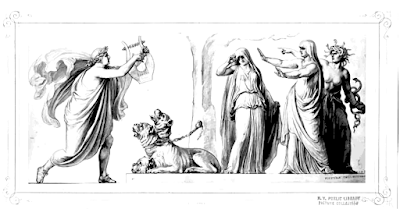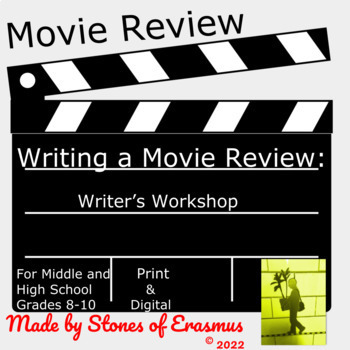 |
| I sell quality humanities-content on TpT. Thank you for supporting Stones of Erasmus. |
 |
| Students love working with these myth-related vocabulary cards. Buy them on the Stones of Erasmus TpT store. |

Stones of Erasmus — Just plain good writing, teaching, thinking, doing, making, being, dreaming, seeing, feeling, building, creating, reading
 |
| I sell quality humanities-content on TpT. Thank you for supporting Stones of Erasmus. |
 |
| Students love working with these myth-related vocabulary cards. Buy them on the Stones of Erasmus TpT store. |

 I am an educator and a writer. I was born in Louisiana and I now live in the Big Apple. My heart beats to the rhythm of "Ain't No Place to Pee on Mardi Gras Day". My style is of the hot sauce variety. I love philosophy sprinkles and a hot cup of café au lait.
I am an educator and a writer. I was born in Louisiana and I now live in the Big Apple. My heart beats to the rhythm of "Ain't No Place to Pee on Mardi Gras Day". My style is of the hot sauce variety. I love philosophy sprinkles and a hot cup of café au lait.
 |
| You'll love this historically-based resource detailing the mystery surrounding Valentine the Saint and Valentine's Day. Download it here from my TpT store. |
Designed for middle and high schoolers, this resource fits seamlessly into thematic lessons around Saint Valentine's Day in English Language Arts and Humanities classes.
Even More Love for Your Lessons:
For full access to this resource and more, navigate to my website, Stones of Erasmus. Let's explore the heart of history together!
 I am an educator and a writer. I was born in Louisiana and I now live in the Big Apple. My heart beats to the rhythm of "Ain't No Place to Pee on Mardi Gras Day". My style is of the hot sauce variety. I love philosophy sprinkles and a hot cup of café au lait.
I am an educator and a writer. I was born in Louisiana and I now live in the Big Apple. My heart beats to the rhythm of "Ain't No Place to Pee on Mardi Gras Day". My style is of the hot sauce variety. I love philosophy sprinkles and a hot cup of café au lait.
 |
| Revitalizing history: the top image showcases my restoration of a 19th-century lithograph, significantly enhancing its clarity compared to the original below. Retrieved from the NYPL digital collection. |
 |
| I partner with TpT to provide educational content for Humanities and English language arts teachers. |
 I am an educator and a writer. I was born in Louisiana and I now live in the Big Apple. My heart beats to the rhythm of "Ain't No Place to Pee on Mardi Gras Day". My style is of the hot sauce variety. I love philosophy sprinkles and a hot cup of café au lait.
I am an educator and a writer. I was born in Louisiana and I now live in the Big Apple. My heart beats to the rhythm of "Ain't No Place to Pee on Mardi Gras Day". My style is of the hot sauce variety. I love philosophy sprinkles and a hot cup of café au lait.
 |
| Stones of Erasmus offers an Educational Download designed to teach the myth of Orpheus and Eurydice |
In the realm of English Language Arts (ELA), the ancient, tragic tale of the Greek myth of Orpheus and Eurydice offers a rich tapestry of themes and lessons for middle and high school students. Stones of Erasmus has created a comprehensive educational resource that provides an engaging, interactive, and distance-learning optimized approach to this timeless tale.
 |
| Orpheus enters the underworld. Image Credit: NYPL Digital Collections |
The story of Orpheus, the divine musician who loses his wife Eurydice twice, is a poignant exploration of love, loss, and the creative power of music and art. Our resource brings this myth to life in the classroom, whether virtual or physical, through a variety of activities and discussion prompts.
Over a three-day lesson plan, students will delve into the myth, analyze its characters and themes, and engage in critical thinking. The resource includes:
1. Art + Literature Connections: Students compare the myth with artwork by renowned artists like Auguste Rodin, fostering a deeper understanding of the story.
2. Reading Cards: This lesson is most effective when supplemented with diverse texts from Edith Hamilton's Mythology, Bulfinch's Mythology, and Ovid's Metamorphoses. However, the resource also includes an introductory dictionary entry on classic Greek and Roman mythology for a comprehensive start.
3. Reading Comprehension and Critical Thinking Questions: These questions encourage students to delve deeper into the text, promoting comprehension and critical thinking.
4. Frayer Model Vocabulary Cards: This visual approach to vocabulary helps students understand terms, geography, and challenging words in the context of the story.
5. Exit Tickets: These provide immediate feedback on students' understanding of the lesson, helping teachers adjust future instruction as needed.
6. Essay Writing Activity: This activity caps off the lesson, allowing students to express their understanding of the myth in a creative way.
Our resource aligns well with the Common Core Standards, particularly the reading literature standard that encourages the analysis of a subject or key scene in two different artistic mediums.
Whether used as a stand-alone lesson or paired with a larger unit on Myth, Percy Jackson and the Lightning Thief, Robert Graves’s Greek Myths, or Edith Hamilton’s Mythology, or Parallel Myths by J.F. Bierlein, this resource offers a comprehensive and engaging exploration of the tragic love story of Orpheus and Eurydice.
For more resources like this, visit the Stones of Erasmus TpT store, and join us on our journey to make ELA education more engaging and interactive.
 I am an educator and a writer. I was born in Louisiana and I now live in the Big Apple. My heart beats to the rhythm of "Ain't No Place to Pee on Mardi Gras Day". My style is of the hot sauce variety. I love philosophy sprinkles and a hot cup of café au lait.
I am an educator and a writer. I was born in Louisiana and I now live in the Big Apple. My heart beats to the rhythm of "Ain't No Place to Pee on Mardi Gras Day". My style is of the hot sauce variety. I love philosophy sprinkles and a hot cup of café au lait.
@cafedumonde "I use my Granny voice and tell the story of Cronus and how he was dethroned by Zeus, thus beginning the Titanomachy." #GreekMythology #Cronus #Zeus #Titanomachy #Storytelling #ancientlegends ♬ Moonlight Sonata - Beethoven - Classical Piano - Instrumental Classical Music - Classical Playlist - Sleeping Music - Music For Relaxation - Classical Piano & Classical Music & Classical
 |
| Rhea tricks Kronos |
 |
| Kronos: 3-Day Lesson |
 I am an educator and a writer. I was born in Louisiana and I now live in the Big Apple. My heart beats to the rhythm of "Ain't No Place to Pee on Mardi Gras Day". My style is of the hot sauce variety. I love philosophy sprinkles and a hot cup of café au lait.
I am an educator and a writer. I was born in Louisiana and I now live in the Big Apple. My heart beats to the rhythm of "Ain't No Place to Pee on Mardi Gras Day". My style is of the hot sauce variety. I love philosophy sprinkles and a hot cup of café au lait.
 |
| The Argive hero Perseus pervades myth, art, and literature. |
 |
| Discover Mythology Resources from Stones of Erasmus |
 I am an educator and a writer. I was born in Louisiana and I now live in the Big Apple. My heart beats to the rhythm of "Ain't No Place to Pee on Mardi Gras Day". My style is of the hot sauce variety. I love philosophy sprinkles and a hot cup of café au lait.
I am an educator and a writer. I was born in Louisiana and I now live in the Big Apple. My heart beats to the rhythm of "Ain't No Place to Pee on Mardi Gras Day". My style is of the hot sauce variety. I love philosophy sprinkles and a hot cup of café au lait.
 |
| Unlock English mastery! Transform your classroom with engaging movie reviews that boost language skills, critical thinking, and student participation. |
Teacher's Note for Using this Resource in the English and Writing Classroom: A helpful guide to ensure you get the most out of the resources provided.
Do's and Don'ts Anchor Chart: A visual guide to direct students on what to include and what to avoid in their movie review.
Fillable Movie Information Sheet for Before, During, and After Viewing: This allows students to track key information and impressions throughout the viewing experience, which helps build their review later.
Extended Written Response, Movie Quotes Double Entry Journal, Parts of a Movie Review Graphic Organizer: These tools support and scaffold students' writing, thinking, and reflection processes.
3 Exit Ticket Strategies for Formative Assessment: These will help you gauge student understanding and progress at the end of each lesson.
Movie Review Skills Assessment, 4-Point Grading Rubric, Student-Facing Checklist, and Grading Sheet: These tools help students self-assess their work and aid teachers in providing clear, fair, and consistent grading.
5-Star Rating and Rough Draft Starter: This provides students a starting point for their review and a simple, familiar way to give their overall rating.
Incorporating movie analysis into your curriculum can be a dynamic way to inspire student engagement and improve their English language and writing skills. By combining entertainment and education, you're teaching them language and skills like critical thinking, analysis, and self-expression.
To further extend your resources, consider other products from Stones of Erasmus:
✰ Growing Humanities Bundle for Middle and High SchoolJoin me on this educational journey. Your feedback, comments, and insights are always welcome. Visit my website at stonesoferasmus.com for more resources and ideas.
© 2022-2023 Stones of Erasmus.
 I am an educator and a writer. I was born in Louisiana and I now live in the Big Apple. My heart beats to the rhythm of "Ain't No Place to Pee on Mardi Gras Day". My style is of the hot sauce variety. I love philosophy sprinkles and a hot cup of café au lait.
I am an educator and a writer. I was born in Louisiana and I now live in the Big Apple. My heart beats to the rhythm of "Ain't No Place to Pee on Mardi Gras Day". My style is of the hot sauce variety. I love philosophy sprinkles and a hot cup of café au lait.